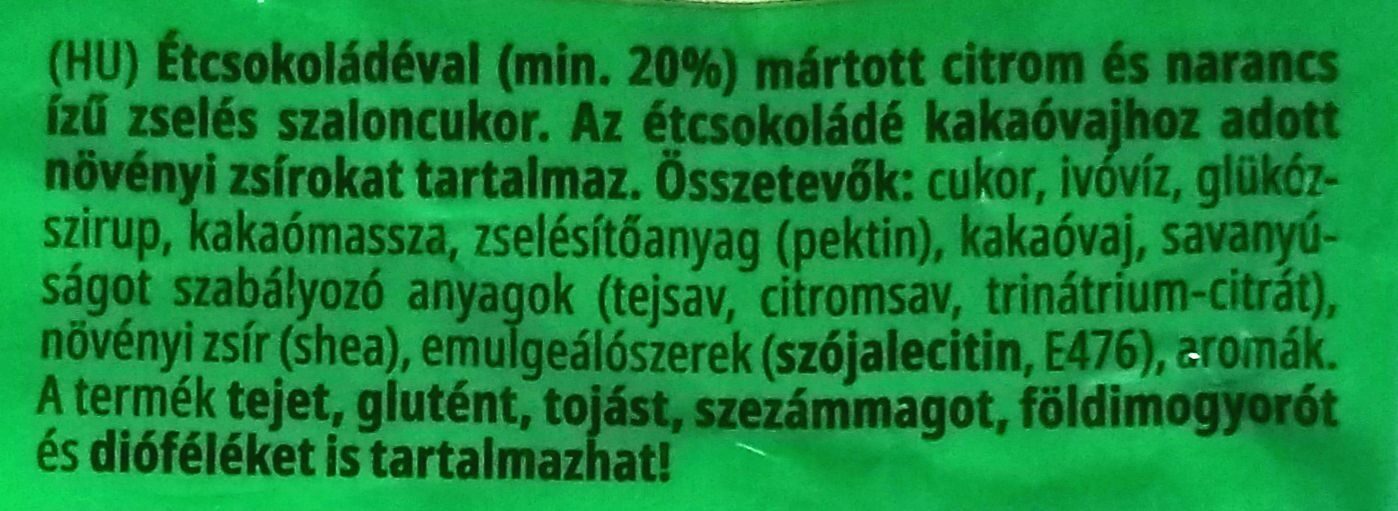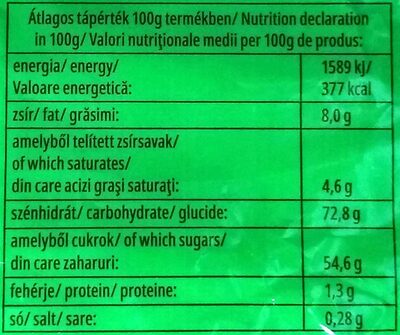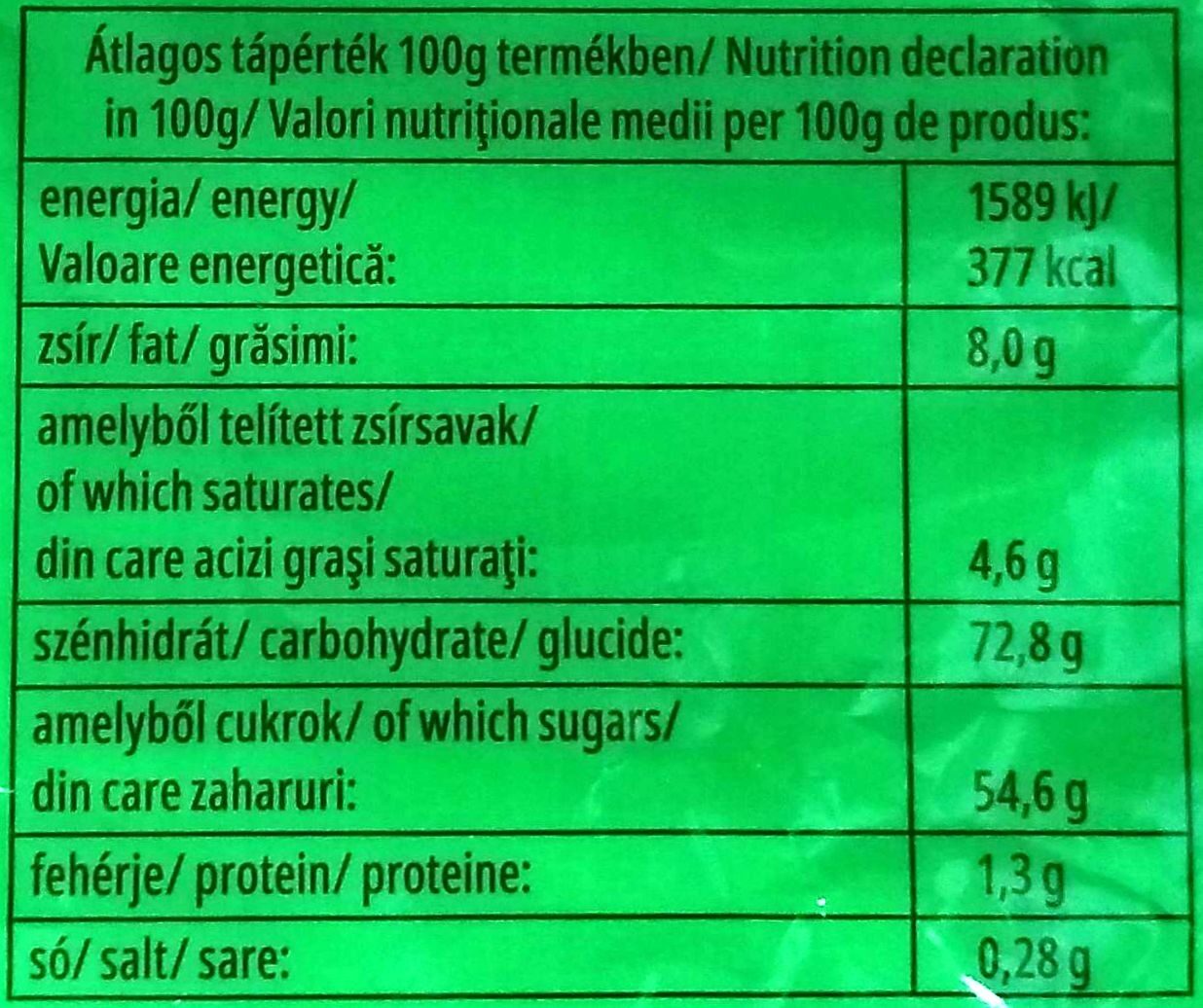Szaloncukor - citrom és narancs ízű zselés - Bonbonetti - 345 g
This product page is not complete. You can help to complete it by editing it and adding more data from the photos we have, or by taking more photos using the app for Android or iPhone/iPad. Thank you!
×
Barcode: 5996496013837 (EAN / EAN-13)
Common name: Étcsokoládéval (min. 20%) mártott citrom és narancs ízű zselés szaloncukor
Quantity: 345 g
Packaging: Plastic, Pp-polypropylene
Brands: Bonbonetti
Categories: Snacks, Sweet snacks, Cocoa and its products, Confectioneries, Biscuits and cakes, Chocolate candies, Bonbons, Cakes
Manufacturing or processing places: Ukrajna
Link to the product page on the official site of the producer: http://www.bonbonetti.hu/blog/termekek/b...
Stores: TESCO
Countries where sold: Hungary











